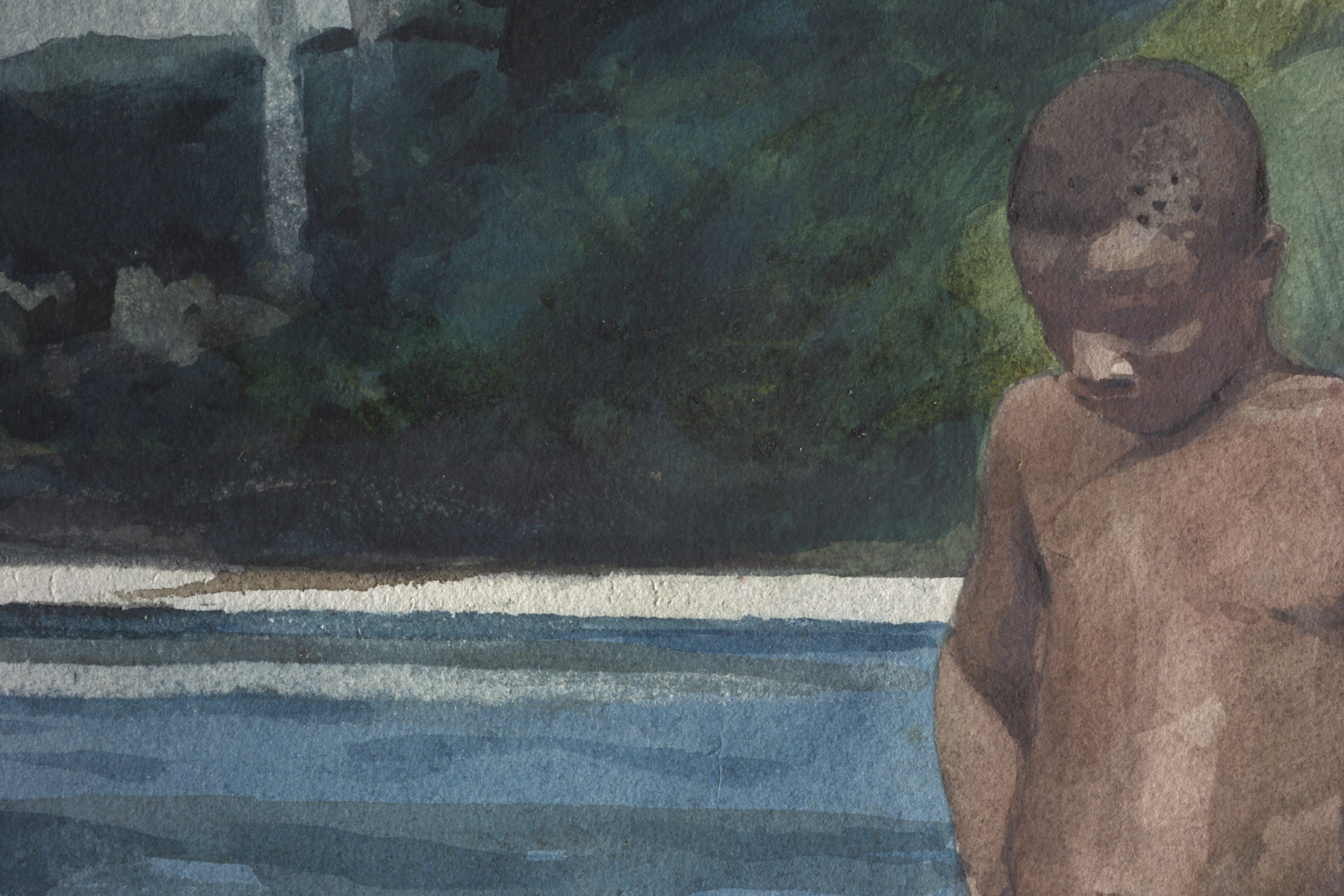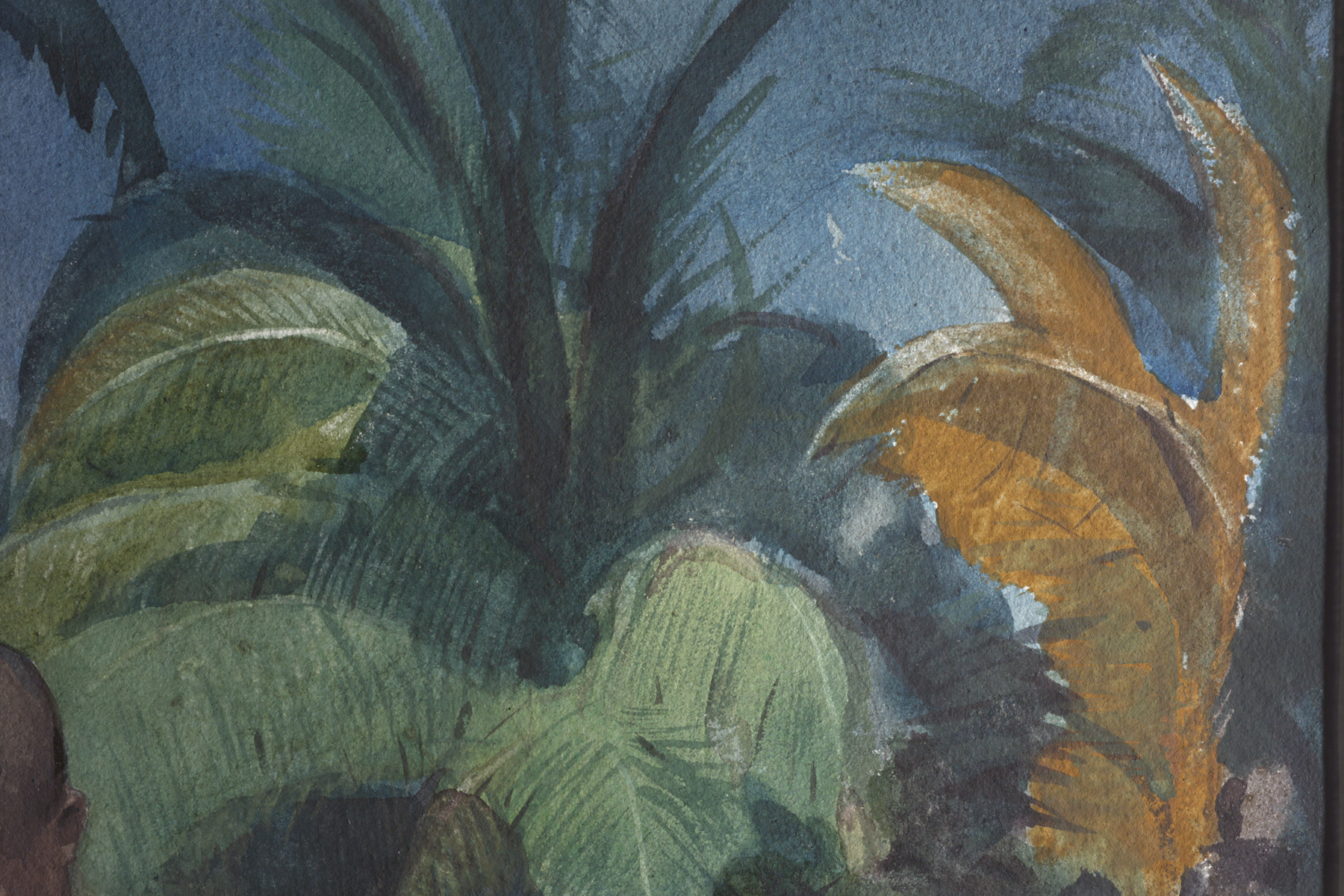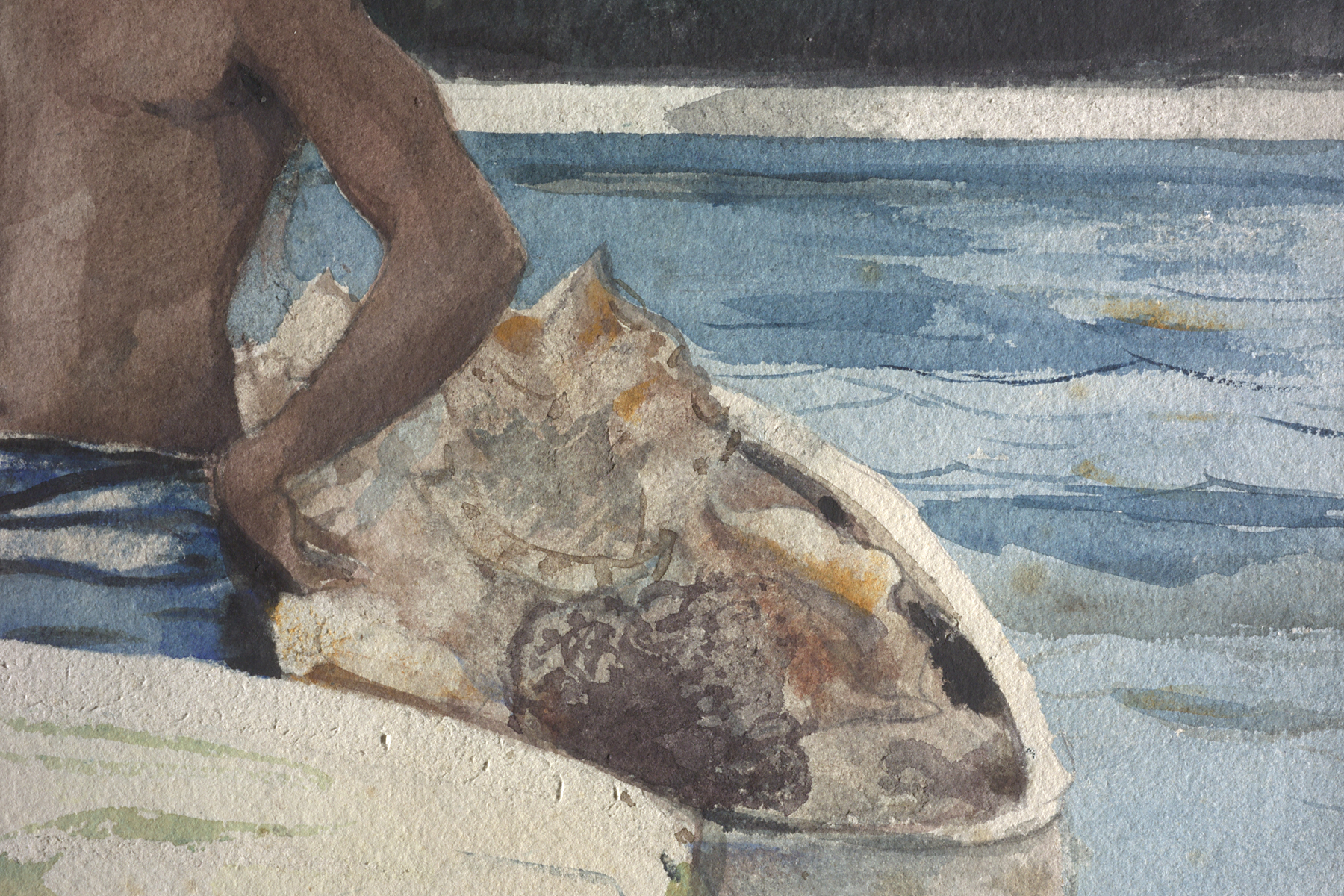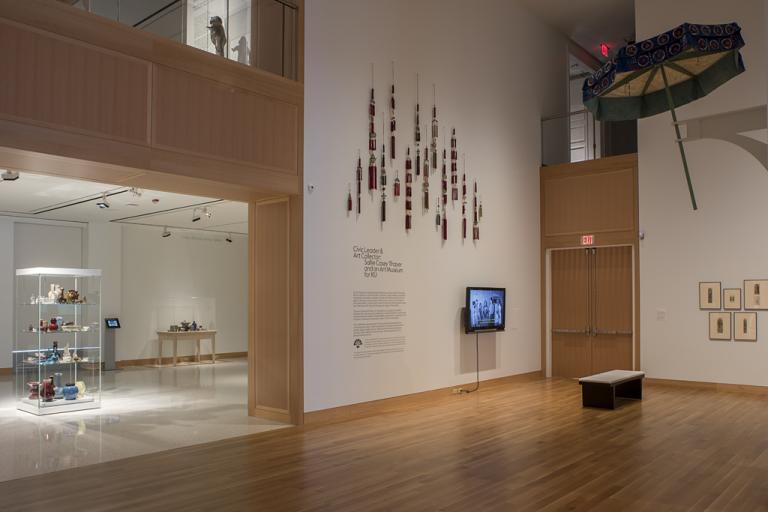West India Divers, Winslow Homer
Artwork Overview
Winslow Homer, artist
1836–1910
West India Divers,
1899
Where object was made: Nassau, Bahamas
Material/technique: watercolor; scraping; chalk; wove paper
Dimensions:
Image Dimensions Height/Width (Height x Width): 38.1 x 54.4 cm
Image Dimensions Height/Width (Height x Width): 15 x 21 7/16 in
Sheet/Paper Dimensions (Height x Width): 38.1 x 54.4 cm
Sheet/Paper Dimensions (Height x Width): 15 x 21 7/16 in
Frame Dimensions (Height x Width x Depth): 25 x 31 1/2 x 3 in
Weight (Weight): 15 lbs
Image Dimensions Height/Width (Height x Width): 38.1 x 54.4 cm
Image Dimensions Height/Width (Height x Width): 15 x 21 7/16 in
Sheet/Paper Dimensions (Height x Width): 38.1 x 54.4 cm
Sheet/Paper Dimensions (Height x Width): 15 x 21 7/16 in
Frame Dimensions (Height x Width x Depth): 25 x 31 1/2 x 3 in
Weight (Weight): 15 lbs
Credit line: William Bridges Thayer Memorial
Accession number: 1928.1785
On display: Simons Gallery
If you wish to reproduce this image, please submit an image request








































